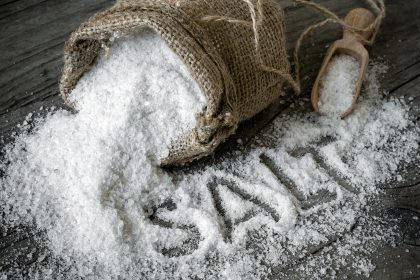High blood pressure, or hypertension, is a common health issue that can lead to serious complications if left unmanaged. One of the significant contributors to high blood pressure is excessive salt intake. While many people are aware of the obvious sources of salt like chips and pretzels, there are several food products with hidden salt that can raise your blood pressure without you even realizing it. In this article, we will explore seven such food products, helping you make more informed dietary choices.
How much salt is healthy?
Salt, or sodium chloride, is an essential mineral for the body, but too much of it can have detrimental effects on your health. According to the American Heart Association, the recommended daily intake of sodium should not exceed 2,300 milligrams, with an ideal limit of no more than 1,500 milligrams for most adults, especially those with high blood pressure. However, the average American consumes much more than this, largely due to hidden salt in everyday food products. Understanding where this hidden salt lurks can help you take control of your sodium intake and maintain a healthy blood pressure level.
1. Bread and rolls
Bread is a staple in many diets, but it can be a sneaky source of sodium. One slice of bread can contain anywhere from 80 to 230 milligrams of sodium. When you consider that most people consume more than one slice per meal, the sodium adds up quickly. Whether it’s a sandwich, toast or a roll with dinner, be mindful of the sodium content in your bread choices. Opt for low-sodium or sodium-free bread options when available.
2. Cold cuts and cured meats
Cold cuts and cured meats, such as ham, salami and bacon, are often loaded with sodium used for preservation and flavor enhancement. A single serving of these meats can contain more than 500 milligrams of sodium, contributing significantly to your daily intake. To reduce your sodium consumption, choose fresh, unprocessed meats and prepare them at home with herbs and spices instead of salt.
3. Cheese
Cheese is another common food product with hidden salt. While it adds flavor and texture to many dishes, it can also add a significant amount of sodium. For example, just one ounce of processed cheese can contain 400 milligrams of sodium. If you’re a cheese lover, try to limit your intake and opt for lower-sodium varieties, such as Swiss or mozzarella, which tend to have less salt compared to processed cheeses.
4. Sauces and condiments
Sauces and condiments like ketchup, soy sauce, salad dressings and marinades often contain high levels of sodium to enhance flavor and shelf life. Just one tablespoon of soy sauce can have up to 1,000 milligrams of sodium. When using condiments, look for low-sodium versions or make your own at home to control the amount of salt. Additionally, be cautious of serving sizes to avoid inadvertently consuming too much sodium.
5. Canned vegetables and soups
Canned vegetables and soups are convenient options for quick meals, but they can also be high in hidden salt. Sodium is often added during the canning process to preserve the vegetables and enhance their flavor. For instance, one cup of canned soup can contain over 700 milligrams of sodium. To reduce your sodium intake, choose fresh or frozen vegetables without added salt and opt for low-sodium or no-salt-added versions of canned products.
6. Frozen meals
Frozen meals are popular for their convenience, but they can be significant sources of hidden salt. Many frozen dinners, pizzas and snacks contain high levels of sodium to enhance flavor and preserve the food. A single frozen meal can have more than 1,000 milligrams of sodium, almost half of the recommended daily intake. When purchasing frozen meals, check the nutrition labels and select options with lower sodium content, or prepare homemade frozen meals with fresh ingredients and minimal salt.
7. Breakfast cereals
Breakfast cereals — especially those marketed as healthy — can also contain hidden salt. Some cereals have added sodium to improve taste and texture. A serving of certain breakfast cereals can have up to 300 milligrams of sodium. To reduce your sodium intake, choose cereals with no added salt or opt for oatmeal or other whole grains that you can flavor yourself without adding sodium.
Hidden salt and your health
Managing your salt intake is crucial for maintaining healthy blood pressure levels. Hidden salt in everyday food products can make it challenging to stay within the recommended limits. By being aware of the common sources of hidden salt and making informed choices, you can significantly reduce your sodium intake and improve your overall health. Always read nutrition labels, choose fresh or low-sodium alternatives and consider preparing meals at home to have better control over the amount of salt in your diet. By taking these steps, you can protect your heart and enjoy a healthier, more balanced diet.
High blood pressure is a silent but serious condition that affects millions of people worldwide. Excessive salt intake is one of the primary contributors to this condition, often hidden in seemingly harmless food products. By identifying and avoiding these hidden sources of salt, you can take proactive steps toward better heart health and overall well-being. Remember, small changes in your diet can lead to significant improvements in your health, so start today by being mindful of your sodium intake and making healthier choices.
This story was created using AI technology.











